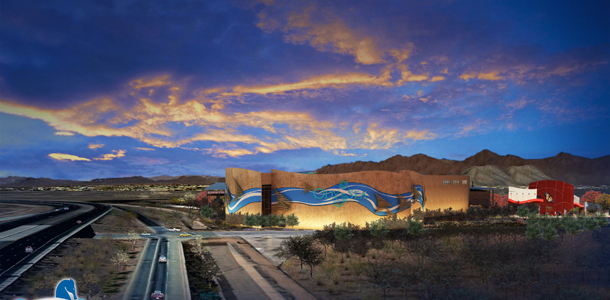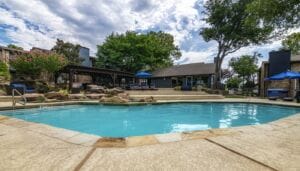There are 22 federally recognized Native American tribes, communities and nations within Arizona’s borders, encompassing thousands of acres of protected or preserved land across the state.
While some areas may never be available for development because of cultural ties to the tribes, a lot of opportunity for future projects exist. Knowing how to develop on tribal lands, however, has been one thing many developers tend to lack, and that mindset still persists, explains Vince Lujan, president and CEO at Salt River Devco.
Developers who have been able to work with the tribes and are familiar with the process have seen success.
“Only time will tell, but if more developers were educated about developing on tribal lands and land-leasing,” Lujan says, “then transactions on tribal lands could go up.”
One of the critical parts of the process when developing on tribal lands is obtaining a land-lease to develop. Since tribal lands are protected and cannot be sold without congressional approval, developers must obtain a land-lease to work on the land. Lengths for the land-lease depend on the tribe, and sometimes it can be a difficult process.
“Once a land-lease is obtained,” Lujan says, “then the builder can move forward, building as quickly as possible.”
Bringing in the infrastructure
Not being able to raise taxes makes it difficult for tribes to establish economies within their lands. In turn, that often prevents the necessary infrastructure to allow development. One source of boosting revenue for economic development on tribal land derives from the Tribal-State Compacts that took effect in Arizona in 1993, allowing gaming on tribal territory.
“Tribes have been able to invest in much-needed projects such as infrastructure,” says Levi Esquerra, director of the Center for American Indian Economic Development at Northern Arizona University. “Gaming isn’t a cure all, but it’s allowed for infrastructure to be put in place.”
During the recession, private development was stagnant on tribal lands, much like it was everywhere else. The only big projects to come up were public projects that were used to stimulate the economy, including Salt River Fields, Cactus League home of the Arizona Diamondbacks and the Colorado Rockies, which broke ground in 2009.
“While many people laid low when everything dropped in 2008, the Ak-Chin Indian Community was able to take advantage of the recession by building up its infrastructure,” says Louis Manuel, Ak-Chin councilman.
Infrastructure improvements were made in 2007 to the community’s 50-acre industrial park, Santa Cruz Commerce Center, which added water lines, utilities, road improvements, street lights and landscaping. Another major infrastructure project the community finished in recent years was its Ak-Chin Indian Community Water Reclamation Facility in 2013. Combined with those infrastructure projects, the Ak-Chin Community has been focusing on bigger projects over the years.
“After the community focused on infrastructure improvements,” Manuel says, “they wanted to invest back into the local community.”
In 2006, Ak-Chin purchased the Phoenix Regional Airport, which has since been renamed Ak-Chin Regional Airport. After the purchase, the airport has undergone several improvements, including runway resurfacing. The most recent improvements started in January, adding runway edge lighting and an automated weather station.
“The community is adding these improvements to the airport so it can encourage more industrial projects in the area,” Manuel says.
In 2013, Ak-Chin completed a multi-million-dollar investment in Phoenix-based Quail Run Building Materials to bring a manufacturing facility to the Santa Cruz Commerce Center.
Expansion and progress

Manuel said the community is now focused on recruiting businesses to its Santa Cruz Commerce Center, as the center boasts an Arizona Gold Shovel-ready certification and is located near the community’s airport. While the area’s industrial opportunities increase, so are the opportunities for fun. Harrah’s Ak-Chin Casino is doubling its square footage through a series of expansions starting in the second quarter of 2016, according to Robert Livingston, general manager of Harrah’s Ak-Chin Casino.
“The City of Maricopa and the surrounding tribal community has been growing in recent years,” Livingston says, “and the time has come for an expansion and series of improvements at Harrah’s.”
Livingston says for years, the casino’s location off of State Route 347, which leads right to Interstate 8, brings in individuals from all across the state. The multi-million dollar expansion will add 200 rooms to the current 300-room hotel, a parking garage, spa and a multi-use ballroom along with a conference center. They will also remodel much of the hotel along with the casino floor, to allow for future additions.
Fun in the desert
While the Ak-Chin Community focuses on industrial projects and casino expansions, the Salt River Pima-Maricopa Indian Community along the Loop 101, has grown into an entertainment hub.
Talking Stick Resort, Salt River Fields at Talking Stick and TopGolf make up their own entertainment district along with plenty of dining options in the area, with close proximity to the freeway, but the area continues to grow with another district for entertainment on the horizon.

It started with Butterfly Wonderland, where visitors can walk through the country’s largest indoor butterfly pavilion. It’s an all-ages attraction nestled near the Loop 101 and East Via de Ventura.
The same team behind the Butterfly Wonderland is developing a 200,0000-square-foot aquarium, OdySea Aquarium, adjacent to Butterfly Wonderland. The aquarium is set to open in July and the project recently hit a construction milestone, “topping out” (completion of the steelwork on the top of the facility).
The immediate access to Loop 101 and the heavy number of tourists who visit the area prompted OdySea Founder Amram Knishinsky to develop these ambitious projects on tribal lands. After the success of Butterfly Wonderland, Knishinsky wanted to create a whole new entertainment district. He knew it was a good area to build after the immediate success of Butterfly Wonderland, which is phase one of Knishinksy’s entertainment district. The aquarium will be the second phase and the third phase will consist of restaurants and retail options.
“It’s an exciting attraction,” Knishinsky says, “and will incorporate theme-park technology. There are still many surprises in store for opening day.”

There had been ramp closures on the Loop 101, but the widening project on the freeway has been something Knishinsky has been excited about as they expect to have 15,000 visitors a day once the aquarium opens. The entertainment district will be set up in a way so people can go to both the aquarium and the butterfly habitat in one day, while also getting some shopping done and grabbing a bite to eat.
While Knishinksky builds his own entertainment district on Salt River lands, the community is developing a $60 million autopark, the Scottsdale AutoShow at Salt River. The project is being developed by Salt River AutoShow LLC, which was formed specifically by the community with assistance from MULLIN360 LLC. The project will encompass 70 acres along Loop 101 and Indian School Road and will be the first master-planned autopark on tribal lands, as well as the first master-planned autopark to be developed in the country in six years.
Courtesy Chevrolet owners will be opening a Courtesy Volvo dealership at the auto mall when it’s completed, and the Chapman Automotive Group will move its Chrysler, Jeep, Dodge, Volkswagen and Hyundai dealerships from along the McDowell Road corridor to the new autopark.




